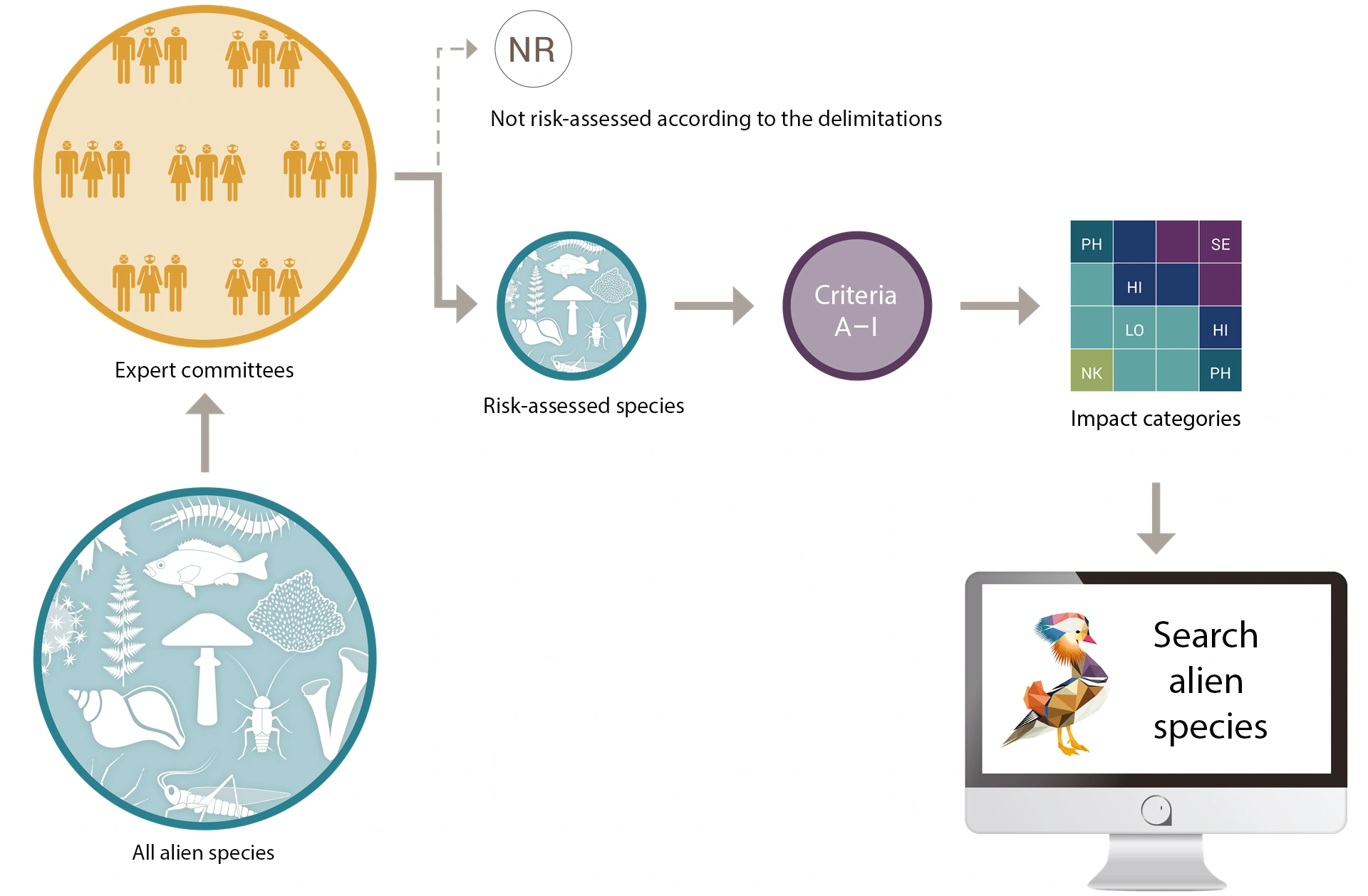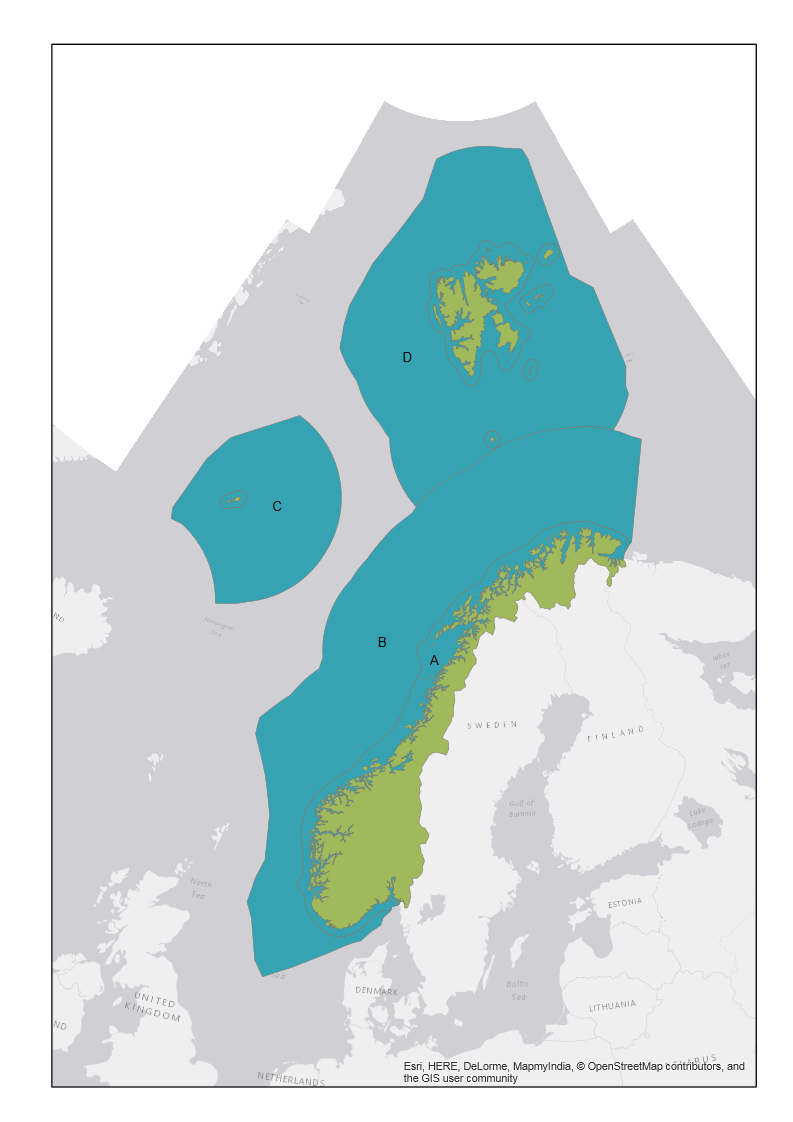Ecological risk assessment
The methodology used for ecological risk assessments of alien species is developed by the Centre for Biodiversity Dynamics, Norwegian University of Science and Technology (NTNU), in collaboration with The Norwegian Biodiversity Information Centre (NBIC).
- Innhold
- How are the risk assessments carried out?
- Which species are assessed?
- Geographical delimitations
- Categories and criteria
How are the risk assessments carried out?
The risk assessments are carried out by a number of expert committees, specialized on different species groups. The committees are appointed by the Norwegian Biodiversity Information Centre.
The experts initially decide which species should not be assessed, based on definitions and delimitations given in the publication Guidelines for the Generic Ecological Impact Assessment of Alien Species. Species that should be assessed are evaluated using nine criteria (A-I). The result of this evaluation process determines the impact category of the species.
Which species are assessed?
The evaluation includes mainly species that is established with a stably reproducing population in Norway after year 1800. Furthermore, alien species that are not established, should be risk-assessed if they have the potential to establish in Norway within 50 years (door knockers). Traditional production species (i.e. species that has been in large-scale use in Norway prior to 1700) are not to be risk-assessed. Alien taxa ranked as a species are to be risk-assessed. Taxa below this level such as subspecies, varieties, cultivars and hybrids may also be risk assessed if needed.
The risk assessments do also include some regionally alien species, i. e. native species introduced to novel areas within Norway after 1800 due to human activity.
Geographical delimitations
The impact assessments cover Norwegian territories in the northern hemisphere. Separate assessments are carried out for Svalbard.
In this context Norwegian territories includes:
- Mainland Norway with nearby islands
- Svalbard (Spitsbergen) and surrounding islands, as well as Bjørnøya and Hopen
- The island of Jan Mayen
- Maritime waters surrounding mainland Norway, Svalbard and Jan Mayen (i.e. territorial waters, the Norwegian Economic Zone, the Fishery Protection Zone around Svalbard and the Fishery Protection Zone around Jan Mayen
Categories and criteria
When assessing ecological risk, alien species are classified to one of the following categories: Severe impact SE; High impact HI; Potentially high impact; Low impact LO or No known risk NK. According to definitions and delimitations not all alien species are risk assessed. These species are named as Not risk-assessed NR.
Ecological impact is defined as the product of invasion potential and ecological effect. Thus, the impact of alien species on nature can best be captured using a two-dimensional figure, where impact is indicated by the species’ position along the invasion axis and the effect axis. The position along the axes determines the species impact category.
The invasion potential and the ecological effects of an alien species is measured by use of nine criteria, A - I:
Invasion potential
A Median population lifetime
B Expansion speed
C Colonization of nature types
Ecological effect
D Effects on native threatened or keystone species
E Effects on other native species
F Effects on threatened or rare nature types
G Effects on other habitat types
H Genetically contaminating (introgression) of native species
I Transmission of parasites (including pathogens)



